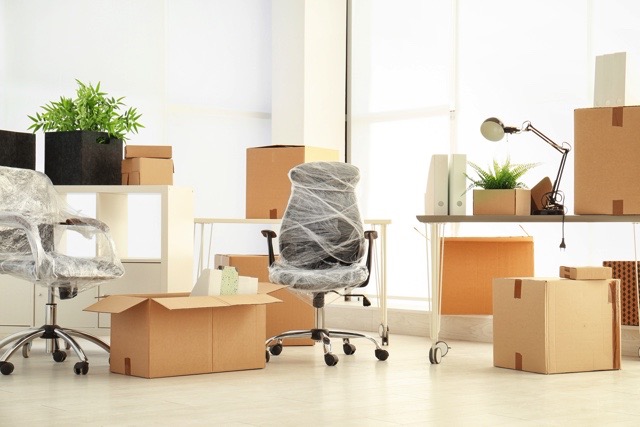When your current location just isn’t working anymore, moving your company to a new office is the obvious next step. It could mean a fresh space, some new furniture, and hopefully an office layout that better suits your business needs. But once you start digging into the logistics, you’re likely to find that there is a lot of planning involved. Luckily we’re professionals at this, so we’ve laid out our best tips for your office move. It’s time to get organized!
Start organizing 3-4 months in advance if possible.
Since there will be a lot of logistics to handle on top of your everyday business operations, planning well in advance will ensure that your staff doesn’t become overwhelmed by the process. Appoint a lead person to be the point of contact for movers, sign your new office lease, ensure utilities are switched, and so forth. Work with that person to develop a timeline of the tasks ahead. Then, enlist any additional support from the appropriate employees. This will keep the move as stress-free as possible.
Hire your commercial movers early.
Since you want to hire a team of movers that will get the job done efficiently and with accuracy, it’s best to book commercial movers well in advance. This will ensure you have your pick of days on the calendar and don’t get stuck with an odd moving day. Plus, you get the quality of mover that you really want — and that’s important.
Create a map of your new office layout.
When employees start packing their offices, they will need to label the boxes to indicate where they should be delivered. To ensure that a clear and labeled map of your future office layout is available to everyone in the office, and then available to your movers.
As employees organize their desk contents, have them label the boxes with their name, contents, and a visible label for where the box should go. For larger offices or businesses with a lot of supplies, consider using a color-coding system. This will keep things easy for your movers, and for unpacking on the other end.
Make a plan with your IT team.
Once you choose your new space, bring your tech support in to check if there are any IT upgrades that need to be made before you can move in. Phones, internet access, and electricity access are all critical to making sure there’s no significant interruption in your business due to the move. Develop an action plan with your IT staff to get the office technology set up, tested, and ready as soon as the move is complete.
Protect the paperwork you need, and shred everything you don’t.
There is no point in transporting clutter from your old office to your new one. Ask your staff to take some time cleaning out their filing cabinets anything that won’t be necessary to keep. Always be sure to check with your accountants and HR staff before putting anything important, like financial or personnel documents, through the shredder!
Then, organize the important documents in a sealed, well-labeled filing box. For any financial or personnel documents that contain sensitive information, you might ask your point person to transport them to be filed in a safe place upon arrival.
Note: among the important paperwork to have handy is your moving Certificate of Insurance. Learn more about that here.
Identify and donate any furniture or supplies you don’t need.
There are many programs that take old computers and refurbish them for use in schools or tutoring programs. Similarly, non-profit offices are often in search of office furniture to support their mission. Check to see what’s in your area, and then have your accountant document the donations for a tax write-off. Reducing the amount of furniture you are transporting will keep your move efficient.
Update your address and inform your clients.
It is best to do this in one fell swoop. Update your website, social media, Yelp, Google Business, USPS listing, and business cards if necessary. If you work with clients in person at your office, be sure to give them advanced notice of the change. That way, they don’t accidentally go to your old location!
Schedule your meetings, appointments, and important events accordingly.
Give yourself and your team a buffer around your moving day where you don’t have any significant tasks planned. This will allow time for the final organization prior to moving day and for unpacking after the move. A team of skilled commercial movers will set up most of your furniture where it needs to be, but employees will still need to organize their desks and office space.
With Flat Rate, our team of commercial movers specializes in efficiency, organization, and professionalism. Let us help ensure your office relocation is seamless!

